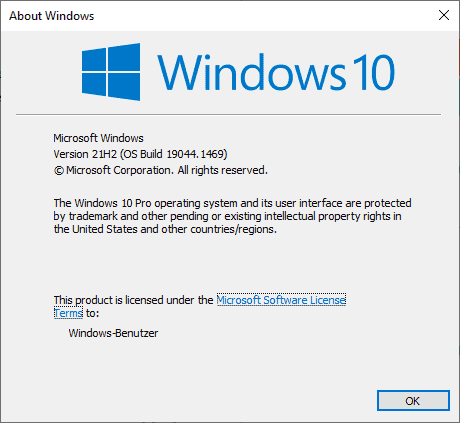Microsoft announced this week via the company's Windows Update Twitter channel that it is rolling out Windows 10 version 21H2 to devices running the older 20H2 version of the Windows 10 operating system.

Microsoft plans to support the Windows 10 operating system until 2025, but individual versions of the operating system may run out of support earlier. Windows 10 version 20H2 will run out of support on May 10, 2022. The May 2022 Patch Day is the last for the version of Windows 10, and devices won't receive updates anymore unless they are updated to a newer version of Windows 10, or if compatible, to Windows 11.
The last major update version for Windows 10 was Windows 10 version 2004. Microsoft released it in May 2020 and ended support for it in December 2021.
The tweet by Microsoft's Windows Update channel provides the following information:
We started the first phase in the Windows 10, version 21H2 rollout for machine learning (ML) training. We are targeting devices on Windows 10, version 20H2 that are approaching end of servicing to update automatically to version 21H2.
The Health Status support page of Windows 10 version 21H2 confirms this:
We also started the first phase in our rollout for machine learning (ML) training, targeting devices on Windows 10, version 20H2 that are approaching end of servicing to update automatically to Windows 10, version 21H2. We will continue to train our machine learning model through all phases to intelligently rollout new versions of Windows 10, and deliver a smooth update experience.
Windows 10 version 20H2 devices will be upgraded automatically to Windows 10 version 21H2 according to the tweet. Microsoft uses the rollout for machine learning training as Windows versions will run out of support frequently in the coming years. The next version to run out of support is Windows 10 version 21H1, which will receive its last updates on December 13, 2022.
Devices running Windows 10 version 21H1 may also be pushed to version 21H2, as it will be supported until June 2023. Another option would be to push the devices to the 2022 release of Windows 10, which may come earlier than expected by many.
Closing Words
Should Microsoft install updates automatically on user devices? The positive effect of this is that security updates continue to be delivered to devices, as they would not receive any otherwise. Users who don't want to give up control on the other hand see this as interference.
Now You: what is your take on this? Should Microsoft install updates automatically on systems that will run out of support soon?
Thank you for being a Ghacks reader. The post Microsoft force installs Windows 10 version 21H2 on 20H2 devices appeared first on gHacks Technology News.

0 Commentaires